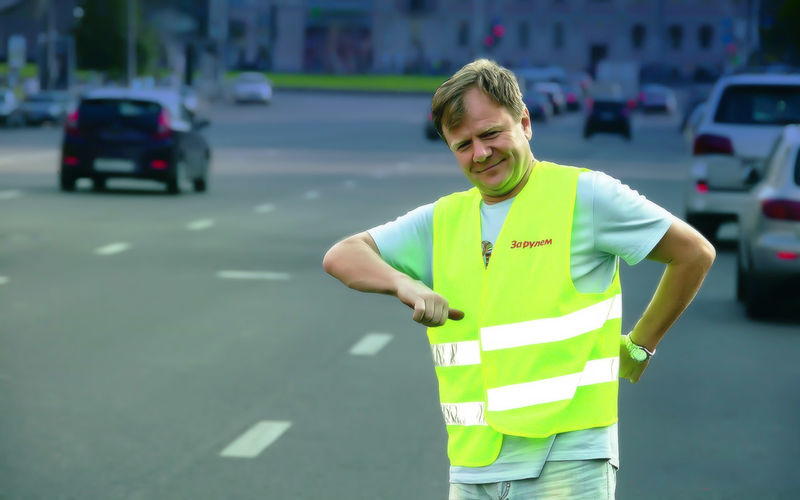“It doesn’t matter if you look like a Christmas tree, only you can see,” says Camilla Fri-Bergström at the Raseborg police. Without reflex, you blend into the surroundings, at least sixth-graders in the Katarina School in Karis know.
The darkness came so suddenly that Freija Kauranen did not react. By the next week when it seals further, she will dig out reflex tapes and trays. Also, she sometimes wears a reflective vest sew on reflective tape.
“But only when mom forces,” she adds whispering.
Here at the Katarina School in Karis, it is obvious to use reflex. Sixth graders Freija Kauranen, Linus Wiklund and Arvid Hanell do not show the slightest hint of attitude problems when it comes to being safe in traffic. It’s cool to be safe. But what about the external requirements?
“The use of reflex is a matter of course, but it should not look anyhow,” says Kauranen.
Both Arvid Hansell and Linus Wiklund are both good users of reflective vests and other smaller reflexes. What one looks like is secondary when it is the issue of security.
It is dark after all so no one sees one.
At the Katarina School, the attitude is admirable, but everywhere people are not as positively inclined to use reflexes. For older Constable Camilla Fri-Bergström at the Raseborg Police, darkness is a yearly recurring theme, if possible even higher than for the rest of us.
“Situational speed. Deer. Moose. Dark. Driving lights. Schoolchildren. Reflex. Raceborg. My thoughts this morning.”
So Fri-Bergström writes on the Raseborg Police’s Facebook page one Tuesday morning in October. The rain, the fog, and the darkness have made their way into classic October manners, and this is evident in the traffic.
The children’s reflections are extra important to think about, she says – the family’s smallest can behave erratically in traffic. Here, the constable points to parents’ responsibilities. Regardless of whether or not reflex is considered a bargaining factor, it is a must for anyone who wants to be different from the environment.
It doesn’t matter if you look like a Christmas tree, only you can see.
Darkness is a national phenomenon but touches on a local level. In Raseborg, taxi drivers who pick up school children in the mornings have wanted all children to wear reflexes to appear better.
But also as an adult, it is important to think about your safety. Fog and bad before, like the dark, affect how you look – and street lighting does not help the situation significantly, although many believe it. Something should be flashing for you to be seen, says the constable.
Without a reflex, you often become a small, gray spot in the surroundings.
A citizen informed the police of an adult who was cycling along the country road – without reflex. According to Camilla Fri-Bergström, this is a common attitude problem – you think you will be seen but the reality is another. In the darkness only what is illuminated by the headlights.
The truth is also a crunch in numbers. The driver of a car with turned on dipped beams can see a pedestrian at an average of fifty meters distance. If the pedestrian wears reflective clothing, they are visible at a distance of 350 meters. With the main beam turned on, the reflex is even more efficient. The law states that pedestrians should use reflex – yet half of the Finns do not, according to data from the Swedish Transport Safety Agency.
“This applies to common sense: use reflexes for others in the traffic to see you,” says Camilla Fri-Bergstrom.
Cyclists and pedestrians can also find it difficult to see in an illuminated urban environment. Immense windows, shadows from shrubs and trees as well as various light sources can affect the field of view. Dirty windshields and bad lanterns can further aggravate the situation.
Since 2003, it has been mandatory by law to use reflexes also in an enlightened urban environment. In a new proposal for the Road Traffic Act, however, the reflex clause shines with its absence – something that caused the Swedish Transport Administration to shudder.
“The statutory code is also a guideline for media and education, private individuals and municipalities. Nobody has been disturbed by the rule for 35 years,” says CEO Anna-Liisa Tarvainen in a press release.
And even though the law recommends the use of reflexes, the one who does not avoid any penalties is met.
“Toothless,” says Ola Lindholm from the insurance company Lokaltapiola South Coast.
“If you are hit, it does not matter whether you wear reflex or not, when looking for potential substitutes. Circumstances determine: has the person gone on the right side of the road? Everyone must follow the rules in that regard,” says Ola Lindholm, whoever goes on the wrong side of the road may have been involved and caused the accident.
Fortunately, such accidents are relatively few and point out that generalizing rules are difficult to give when nothing is black and white.
Ola Lindholm himself thinks that a single reflex is not worth much – here is the reflective vest that applies.
It is quite lean with a reflex that dangles at knee height when moving on a dark road.
